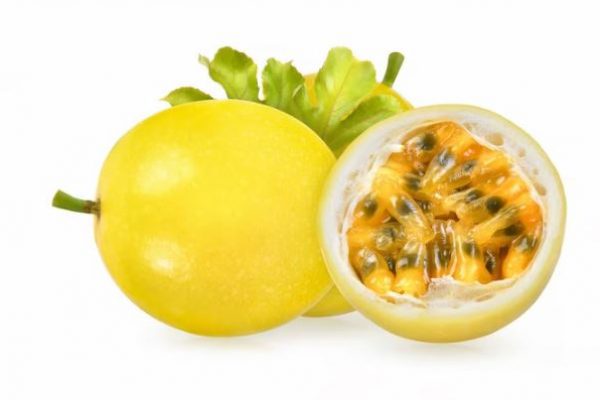Project Report For Passion Fruit
Introduction
Project Report for Passion Fruit is as follows.
Passion fruit has become a significant horticulture crop in India, with increasing demand for both fresh fruit and processed products such as juice, jam, and syrup. Passion fruit is scientifically known as Passiflora edulis and is a member of the Passifloraceae family. The fruit is round or oval in shape, with a tough, inedible skin that ranges in colour from yellow to purple. The flesh of the fruit is juicy, sweet, and tangy, with a distinct flavour that is widely sought after by fruit lovers.
Passion fruit is a low-maintenance crop that grows well on trellises, arbours, or fences. The plant is a robust vine that can grow up to 10 metres long and produces fragrant, appealing blossoms that attract bees and other pollinators. The fruit grows in enormous clusters and is ready for harvesting 70-80 days after blossoming.
Purple passion fruit variants have smaller fruit sizes than other varieties such as yellow passion fruit. It has a circular to oval shape with curving ends and a diameter of 5 to 7 centimetres. the skin colour can range from purple to dark red, with a smooth and waxy texture. It will darken as it ages, and you may notice some dimples and wrinkles on it.
Purple passion fruit is extremely aromatic, emitting tropical and flowery aromas. This fruit’s flesh or pulp contains small and delicious black seeds surrounded by a juicy and succulent yellow to orange sack.

Benefits of Passion Fruit
Vitamin C:- Move over, oranges. Passion fruit is high in this antioxidant. It is used by your body to build blood vessels, cartilage, muscles, and collagen, which keeps your skin looking young. It also promotes healing, reduces inflammation, and protects cells from injury. Developing enough vitamin C lowers your risks of developing a cold and certain types of cancer.
Vitamin A:- The pulp and crunchy seeds of passion fruit include 8% of your daily vitamin A requirement. It is essential for healthy eyes and cells, reproduction, and immunity.
Fiber:- It is rich in passion fruit. Fibre keeps your bowels healthy and flowing, and it keeps you feeling fuller for longer. It also lowers your cholesterol and your risk of diabetes, heart disease, and certain types of cancer.
Nutrients:- Passion fruit also contains calcium, magnesium, phosphorus, potassium, and folate.
Get Completely Custom Bankable Project Report
Market Potential for Passion Fruit
The global Passion Fruit Market is expected to reach around US$ 654.7 Mn by 2026, at a CAGR of 4.8% during the projected period.
The global Passion Fruit Peel market research is an in-depth examination of the industry, market, and key players. The analysis segmented the market by demand and supply. The global Passion Fruit Peel market research also contains trends by market segment, technology, and investment, as well as a competitive landscape.
India is a major exporter of passion fruit, and the country exports passion fruit juice, pulp, and frozen passion fruit to countries such as the United States, the United Kingdom, and Australia. The exports of passion fruit from India are expected to reach a value of INR 2 billion by 2025, which is a significant increase from the current export levels.
The passion fruit market in India is highly competitive, and there are several domestic and international players operating in this market. The major players in the passion fruit market in India include Amul, Parle Agro, Mother Dairy, and Bisleri. These players are focused on expanding their presence in the passion fruit market in India by introducing new products and improving the quality of their existing products.
Passion fruit production in India is relatively new, but it has grown in popularity in recent years due to a growing demand for nutritious, natural, and fresh fruit. Many Indian states, including Tamil Nadu, Karnataka, Maharashtra, and Andhra Pradesh, cultivate passion fruit. The fruit is grown on a variety of soils, ranging from sandy loams to heavy clays, and is irrigated using both surface and subsurface methods in these areas.

